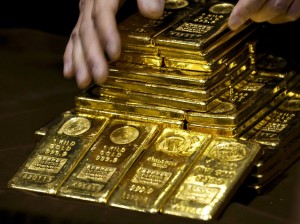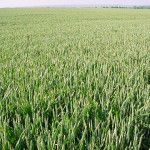 Gold futures gained 1% on Thursday, following disappointing U.S. economic data. Q1 GDP growth was revised downwards to 2.4%, compared to 2.5% according forecasts, thus dampening speculation about an earlier-than-anticipated slowdown of Feds Quantitative Easing program. Initial jobless claims rose by 10 000 to 354 000, way above the forecast of a 4 000 decline to 340 000. Market players have largely been tracking the shifting expectations about Feds monetary easing program this year. Negative U.S. data, which has been piling recently suggests the stimulus wont be coming to an end any soon.
Gold futures gained 1% on Thursday, following disappointing U.S. economic data. Q1 GDP growth was revised downwards to 2.4%, compared to 2.5% according forecasts, thus dampening speculation about an earlier-than-anticipated slowdown of Feds Quantitative Easing program. Initial jobless claims rose by 10 000 to 354 000, way above the forecast of a 4 000 decline to 340 000. Market players have largely been tracking the shifting expectations about Feds monetary easing program this year. Negative U.S. data, which has been piling recently suggests the stimulus wont be coming to an end any soon.
August gold futures traded at $1 411,90 an ounce, up 1.4% on the day. Trading volumes were 49% higher than the 100-day average for this time of the year according to Bloomberg.
“Today’s data is an indication that the economy has not fully recovered, and so the Fed will not end its stimulus in a hurry,” Phil Streible, a senior commodity broker at R.J. O’Brien & Associates in Chicago, said for Bloomberg.
The dollar extended losses versus all its major counterparts yesterday and continued through today. This drove most of the dollar-priced commodities up, as they become more attractive as an alternative asset and are cheaper for foreign currency holders. The dollar index, which represents the currencys performance against six major peers – GBP, AUD, EUR, CAD, CHF, and JPY fell 0,25% and traded at 83,46, the weakest level since May 14.
Gold was also supported by central banks increased physical demand lately. Russia and Kazakhstan have been diversifying assets by buying gold afteR prices contracted with a record pace. The two countries have kept buying gold for a seventh straight month. Turkey is also on the list of countries, which have expanded their gold reserves. Turkey’s holdings increased by 18,2 tons to 427,1 tons in April, a tenth straight month rise. Belarus’s holdings increased for a seventh month and Azerbaijan’s and Greece’s reserved gained for a fourth month in a row. Gold demand in India, world’s largest buyer, will hit a quarterly record according to the World Gold Council and will reach 300 to 400 metric tons, equal to half of the total shipments last year. This increased interest, based on lowered prices, has kept supporting the precious metal.





